PDF chapter test TRY NOW
D) Cold storage
The process involves storing perishable foods like vegetables, fruits, milk and milk products at a low temperature. When stored at low temperatures, the biological and chemical reactions slows down, which prevents spoilage. The microbial growth and enzyme reactions in the food slows down.
Example:
Storing of perishable foods in the refrigerator
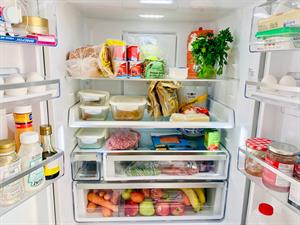
Storing fruits and vegetables in the refrigerator
Important!
Bananas are stored best at room temperature. When stored in a refrigerator, the enzyme ethylene (responsible for ripening) becomes inactive. Also, the enzyme polyphenol oxidase (responsible for browning and cell damage) becomes active, which cause the change of skin colour from yellow to dark brown.
E) Freezing
Freezing is a widely used method of food preservation. The process involves storing the food at temperatures below 0°C where microorganisms cannot grow. At this temperature, chemical and metabolic reactions are also reduced.
Most perishable foods can be preserved for several months if the temperature is brought down quickly (called quick freezing) and the food held at these temperatures.
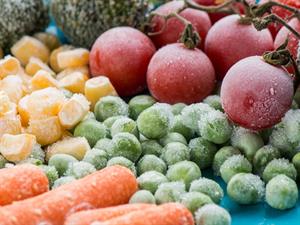
Frozen vegetables
F) Freeze-drying
In the process, the food is frozen, and water or moisture from the food is removed under vacuum. The food in the method is preserved in the natural state without any loss of flavour or texture.
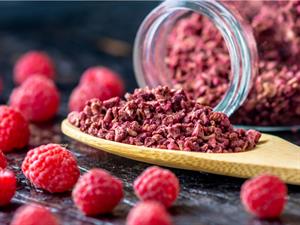
Freeze drying the fruits
Example:
Green peas, prawns, and potato can be preserved by freeze-drying.
G) Pasteurization
Pasteurization is a process where there is heat treatment of liquid food products.
It is the method that employs temperature below 100°C to preserve food. The pasteurization process was named after Louis Pasteur. He discovered that the spoilage organisms could be inactivated in wine by applying heat at temperatures below the boiling point of wine.
The pasteurization process was later applied to milk and remained the most important operation in the processing of milk. Pasteurization is employed to preserve milk and beverages (beer, fruit juices and aerated drinks).
The process involves boiling of milk to a temperature for about 63°C for about 30 minutes, followed by sudden cooling to about 10°C or lower. This method destroys the microbes present in the milk.
Pasteurization minimizes the health hazards from pathogenic micro-organisms and extends the shelf-life. In foods such as fruit juices, shelf life is extended for several days or weeks due to the destruction of spoilage micro-organisms and enzyme inactivation.
The pasteurization process was later applied to milk and remained the most important operation in the processing of milk. Pasteurization is employed to preserve milk and beverages (beer, fruit juices and aerated drinks).
The process involves boiling of milk to a temperature for about 63°C for about 30 minutes, followed by sudden cooling to about 10°C or lower. This method destroys the microbes present in the milk.
Pasteurization minimizes the health hazards from pathogenic micro-organisms and extends the shelf-life. In foods such as fruit juices, shelf life is extended for several days or weeks due to the destruction of spoilage micro-organisms and enzyme inactivation.
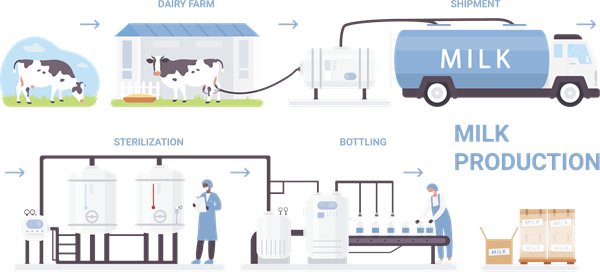
Pasteurization of milk
Important!
Alternatively, when using higher temperatures, the milk is heated for 72°C for about 15 seconds.
H) Canning
This method is employed for most vegetables, fruits, dairy products, fruit juices, ready-to-eat foods, and meat. The food products are processed, stored in clean, steamed airtight containers (cans) under pressure and then sealed.
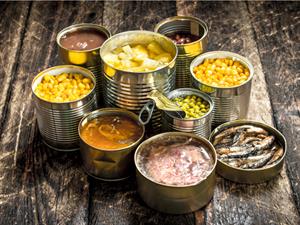
Canned foods
After sealing, they are subjected to high temperatures - above 100°C. Then they are cooled where all microbes are destroyed.
I) Boiling
Cooking of rice, vegetables, meat are usually done by boiling the food with water and using temperatures around 100°C. Boiling the food at 100°C kills the vegetative cells and spores of yeast and moulds and vegetative cells of bacteria.
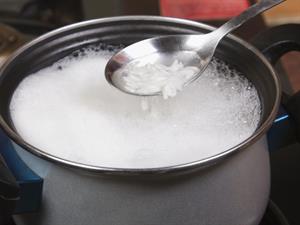
Boiling rice
Foods like milk can be preserved by boiling them at home. Cooked food thus can be preserved 12 to 24 hours at room temperature.

Boiling milk
Reference:
https://commons.wikimedia.org/wiki/File:Simple_Pasteurization.png
